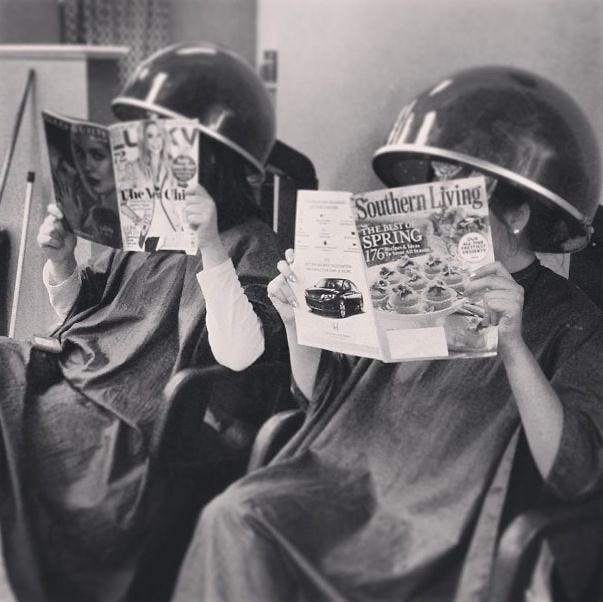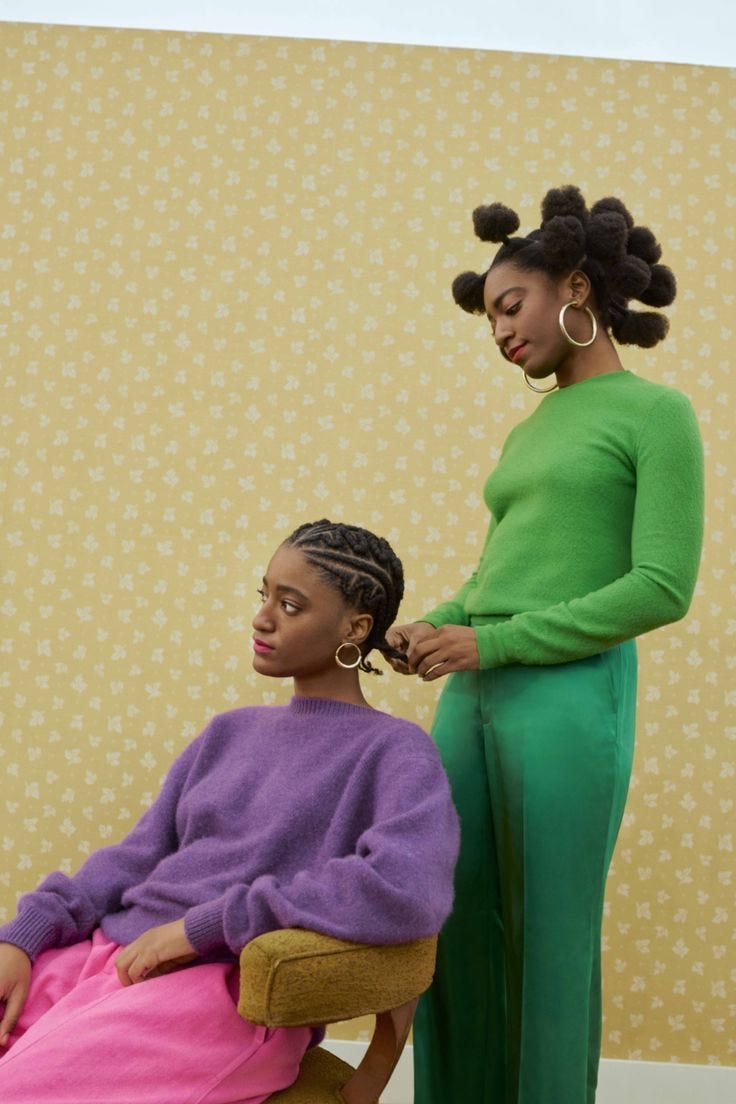As someone who critiques the beauty industry for a living, I like to think I’ve got a sharp eye for its shortcomings. But I have a blind spot: the naive assumption that the hair industry has made meaningful strides towards inclusivity. Let me explain myself. It’s probably because I tend to book salons I know and trust. Somewhere along the way, I’ve conflated the few for all - apparently.
For Black women, the act of going to a hair salon can feel less like a luxury and more like entering the lion’s den. Horror stories are aplenty - from being turned away at the door to enduring disastrous blow-dries. For those of us with type 4 hair, even trusting a stylist can be a daunting experience. Personally, I’ve always been cautious about who touches my hair - not just because of its texture, but because I’m self-aware enough to know I’d never survive the trauma of a botched job.
So, when I was invited to a high-tech, luxury salon for a scalp treatment, I said yes, clearly delusional. Not once did I consider my hair. (I know, madness.) In my defence, this wasn’t just any salon; it promised cutting-edge tools and DNA-level diagnostics. Surely, in 2024, a salon this advanced would be trained in all hair types, right?
Wrong.
What should have been a restorative experience quickly spiralled into a nightmare. The problems started at the sink. Rule number one of type 4 hair care: detangle, detangle and more detangling. Instead, the stylist’s scalp massage while lovely turned my hair into a matted mess. I convinced myself to trust the process, hoping they’d sort it out during the conditioning phase. Spoiler alert: they didn’t.
Then came the blow-drying - a moment I now relive with dread. By then, my hair had shrunk into tight knots. The tools they chose - a fine-toothed tail comb and a diffuser - were comically unsuitable for my hair type. What followed felt like punishment: two stylists tugging and yanking (not intentionally but when you’re using such a fine comb, what do you expect?) through my thick tangled strands. I was crying inside but said nothing, too embarrassed to correct the professionals. How do you even tell a professional, how to do their job? I know, I know, I know my hair and I should’ve said something but I was really not in the mood for a teaching moment, and so I had to deal with the consequences.
I had even took off my glasses, counting on my blurry vision to shield me from the horror unfolding before me. The worst part? They used the diffuser to literally press my hair down, as if trying to force it into submission. The whispered exchanges between the team did little to relieve my humiliation; I quite literally shrank into the chair. By the time I left, my hair was unrecognisable, my head was throbbing, and luckily for me, I had my headscarf to conceal their sins.
This wasn’t just a bad hair day - it was a stark reminder of how far the beauty industry still has to go.
My experience is hardly unique. It’s emblematic of a broader issue: the systemic neglect of textured hair within the beauty industry. Despite the Black hair care market being projected to surpass $10 billion globally by 2031, many salons remain woefully untrained in caring for afro and textured hair.
The U.K. took a step forward in 2021 by updating its National Occupational Standards (NOS) to include afro hair training in hairdressing qualifications. But the real challenge lies in implementing this training. It’s ultimately up to salons to hire and properly train stylists who can cater to all clients.
The result? A glaring divide. In urban, multicultural areas, you’re more likely to find stylists equipped to work with textured hair. But in rural parts of the U.K., Black women often have to travel miles just to find someone who can do the bare minimum. To be honest, London salons can be a place of segregation. A 2017 report found that out of 35,704 beauty salons in the U.K., only 302 explicitly catered to afro hair. That statistic is HUGE, considering how diverse the U.K. is.
Then there’s the financial burden. Black women face what’s often dubbed the “Hair Texture Tax,” where salons charge significantly more for afro hair services, citing the extra time and effort required. Blow-dries, for instance, are often priced at a premium, effectively excluding many women from mainstream salons altogether.
Where mainstream salons fail, Black-owned hairdressers and businesses step in. These spaces do more than just style hair—they create community and cater to the nuanced needs of textured hair with care and expertise. Salons like The Wig Bar London, Charlotte Mensah Hair Lounge, and Simone Powderly Hair are leading the charge, providing services that not only meet but provide high quality services.
These stylists are also driving innovation, adopting holistic approaches to hair care that include scalp treatments, consultations, and education. They understand that afro hair isn’t just about aesthetics; it’s about health, history, and identity.
True inclusivity, however, requires more than niche solutions. The mainstream beauty industry must do better. Afro hair training is a start, but without accountability, these efforts will always fall short. High-street chains and luxury salons alike must commit to universal training, equitable pricing, and culturally competent service.
Until then, the onus is on Black women and they’re left navigating a system that was never built for them.
Despite these challenges, some progress is being made. Black-owned salons and brands are setting the standard, proving that excellence in afro hair care isn’t just possible - it’s essential. They are paving the way for a future where Black women can walk into any salon and receive the care they deserve.
For now, that dream of popping into the nearest salon for a quick wash-and-go remains out of reach. Until then, we’ll keep demanding better - and dodging hair salon trauma.
Face Value is a “weekly” newsletter about beauty, culture, and the way we perceive beauty. If this is something you’re interested in, consider subscribing and sharing.





